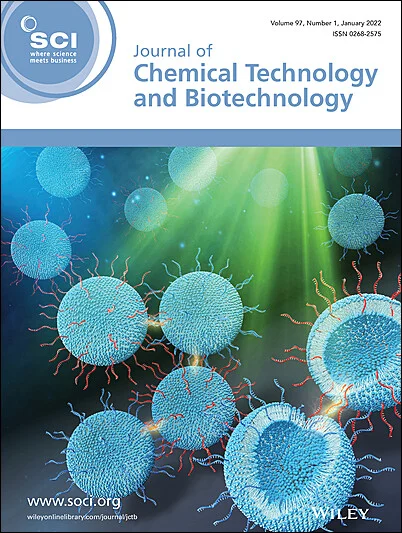求助PDF
{"title":"Advancements in PEM fuel cell technology: evaluating the influence of operating parameters, flow field design, bipolar plate coating, and material factors","authors":"Aumkumar Patel, S Nishanth, Tushar Patil","doi":"10.1002/jctb.7855","DOIUrl":null,"url":null,"abstract":"<p>Increased greenhouse gas emissions and global warming are driving the world towards going greener by reducing the reliability of fossil fuels and using more and more renewable and green sources of energy. Green hydrogen is emerging as a promising alternative to fossil fuels as it has high mass-energy density, low refueling time, and zero emissions. The polymer electrolyte membrane or proton exchange membrane (PEM) fuel cell is an electrochemical device that converts the chemical energy of hydrogen directly into electrical energy. One of the major factors that obstruct the commercialization of green hydrogen technology is its high cost and limited durability. Hence, researchers around the world are extensively working towards improving the performance and reducing the cost of PEM fuel cells by improving the design and employing alternative materials. This paper focuses on providing a comprehensive overview of the performance parameters of the PEM fuel cell and all the recent advancements in the PEM fuel cell design aspects, such as novel flow field designs and their effectiveness, bipolar plate materials, coatings, and their effectiveness. This study also throws light on types of gas diffusion layers and sealing techniques, as well as materials employed in PEM fuel cell and stack development. This review addresses interdisciplinary advancements and highlights their interconnected effects on polymer electrolyte membrane fuel cell performance and scalability. © 2025 Society of Chemical Industry (SCI).</p>","PeriodicalId":15335,"journal":{"name":"Journal of chemical technology and biotechnology","volume":"100 6","pages":"1159-1190"},"PeriodicalIF":2.8000,"publicationDate":"2025-03-28","publicationTypes":"Journal Article","fieldsOfStudy":null,"isOpenAccess":false,"openAccessPdf":"","citationCount":"0","resultStr":null,"platform":"Semanticscholar","paperid":null,"PeriodicalName":"Journal of chemical technology and biotechnology","FirstCategoryId":"5","ListUrlMain":"https://onlinelibrary.wiley.com/doi/10.1002/jctb.7855","RegionNum":4,"RegionCategory":"生物学","ArticlePicture":[],"TitleCN":null,"AbstractTextCN":null,"PMCID":null,"EPubDate":"","PubModel":"","JCR":"Q3","JCRName":"BIOTECHNOLOGY & APPLIED MICROBIOLOGY","Score":null,"Total":0}
引用次数: 0
引用
批量引用
Abstract
Increased greenhouse gas emissions and global warming are driving the world towards going greener by reducing the reliability of fossil fuels and using more and more renewable and green sources of energy. Green hydrogen is emerging as a promising alternative to fossil fuels as it has high mass-energy density, low refueling time, and zero emissions. The polymer electrolyte membrane or proton exchange membrane (PEM) fuel cell is an electrochemical device that converts the chemical energy of hydrogen directly into electrical energy. One of the major factors that obstruct the commercialization of green hydrogen technology is its high cost and limited durability. Hence, researchers around the world are extensively working towards improving the performance and reducing the cost of PEM fuel cells by improving the design and employing alternative materials. This paper focuses on providing a comprehensive overview of the performance parameters of the PEM fuel cell and all the recent advancements in the PEM fuel cell design aspects, such as novel flow field designs and their effectiveness, bipolar plate materials, coatings, and their effectiveness. This study also throws light on types of gas diffusion layers and sealing techniques, as well as materials employed in PEM fuel cell and stack development. This review addresses interdisciplinary advancements and highlights their interconnected effects on polymer electrolyte membrane fuel cell performance and scalability. © 2025 Society of Chemical Industry (SCI).
PEM燃料电池技术的进展:评估操作参数、流场设计、双极板涂层和材料因素的影响
温室气体排放的增加和全球变暖正在通过降低化石燃料的可靠性和使用越来越多的可再生能源和绿色能源,推动世界走向绿色。绿色氢具有质能密度高、加氢时间短、零排放等优点,正在成为化石燃料的替代能源。聚合物电解质膜或质子交换膜(PEM)燃料电池是一种将氢的化学能直接转化为电能的电化学装置。阻碍绿色氢技术商业化的主要因素之一是其高成本和有限的耐用性。因此,世界各地的研究人员都在通过改进设计和采用替代材料来提高PEM燃料电池的性能和降低成本。本文重点介绍了PEM燃料电池的性能参数,以及PEM燃料电池设计方面的最新进展,如新型流场设计及其有效性、双极板材料、涂层及其有效性。这项研究还揭示了气体扩散层的类型和密封技术,以及PEM燃料电池和燃料堆开发中使用的材料。本文综述了跨学科的进展,并强调了它们对聚合物电解质膜燃料电池性能和可扩展性的相互影响。©2025化学工业学会(SCI)。
本文章由计算机程序翻译,如有差异,请以英文原文为准。

 求助内容:
求助内容: 应助结果提醒方式:
应助结果提醒方式:


